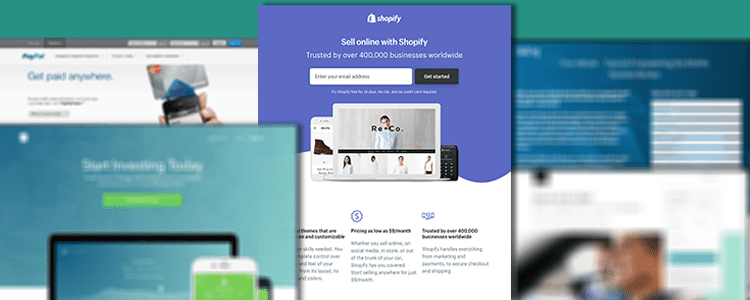Marketers from all walks of life understand that getting visitors to your website is half the battle, the next focus should be turning them into leads. The variety of strategies for lead generation and conversion are diverse, but today, we’ll delve into exactly why landing pages are vital to any successful campaign.
To learn more about the elements that go into a strong landing page, click here.
Landing pages should be in the middle of any ripened inbound marketers efforts to drive leads. Simply put, a marketing campaign points the potential customer in the right direction, but a landing page puts the item in his hands. Think of it this way, a landing page is a place for interested parties to land after clicking on a call-to-action button somewhere. The page will provide detailed yet clear information about the product or offering, and prompt them to either make a purchase, provide an email address, or make a download of some sort.
So, what exactly is a landing page?
A landing page is typically an extension of your existing website, that is set up in order to harness your potential customer’s information through a conversion form like an email sign-up. They are typically set up through a call-to-action (CTA) on an email campaign, a social media post or through a PPC ad placement. Potential customers are visiting the landing page in order to complete a task: attend a webinar, redeem an offer, or get a free trial of the product, etc.
Put briefly, a campaign offers your target audience something of value, the landing page gives it to them, but not without grabbing some of their information first in order to convert them.
Landing pages are often the starting point of a customer’s journey with you. Once you harvest their information from the page, you can begin converting these leads by building a relationship with them.
Now, what are landing pages really used for?
Provide offerings to customers
Simply put, a landing page exists as a means of welcoming your customers and potential customers in a place to interact with you. This could mean through making a purchase of your product, signing up for a newsletter, joining a contest, etc. The page acts as a place for prospects to land in order to convert them into leads.
A bridge between your ads and the offer
The potential customers landing on this page had to come from somewhere. A person that is interested in your product is likely landing on your page after clicking an ad on a social media platform, or by clicking a link within a newsletter, etc. It’s the perfect opportunity to answer any final questions your customer may have after seeing your ad, or to truly flesh out the value proposition you’re trying to sell in depth. Know your customers and how they think and you can use your landing pages to ensure that all their questions are answered and that they have a clear understanding of why your offering is the best fit for them.
Of course, unlike limited ad spaces, a landing page is a canvas that allows for more content in order to convey your message to the audience.
Use in tandem with other marketing channels
A landing page is part of a greater marketing campaign. This means that it is just one key element to be considered within your entire marketing strategy. A landing page should be used in conjunction with social media posts, ads, email marketing, and other avenues. All of these elements should seamlessly work together to stylistically match your brand, your messaging, and your product. Have all of your content, including your landing page, create a cohesive brand experience.
Generate and convert leads
It’s our job as marketers to create a smooth experience for interested parties to become aware of our product, learn what they need to know about it, and eventually buy it. Landing pages are an indispensable piece of this. These pages not only act as a place for people to land and learn more, but it’s also a place for the marketer to get something from visitors. With an email sign-up on the page, we can harvest new contacts and build strategies to market to them. Selling a B2B product? Encourage sign-ups using business domain emails. Selling a consulting service? Ask your potential customer to sign up for a free consultation.
Use analytics to grow your marketing strategy
Like with many things, the more you do them, the better you get at them. This is also very true in the marketing world. The more you experiment with marketing practices, the more clarity you will get in order to move forward more effectively. Beyond the saying “practice makes perfect,” you should also be integrating analytics within your landing pages, in order to conduct an efficient post-mortem analysis.
Analytics can help you figure out what’s working and what isn’t, as well as more closely identify which potential customers are more engaged overall. This can be done through placing a tracking code on the landing page in order to keep track of the performance of ads and other elements.
Landing pages are a fundamental part of generating leads. While there are many moving pieces within any campaign, landing pages are one of the strongest tools to tell a story and build legitimacy. When you invite someone to click on a link, you should provide them with a comfy place to land.
Don’t forget to share this article


